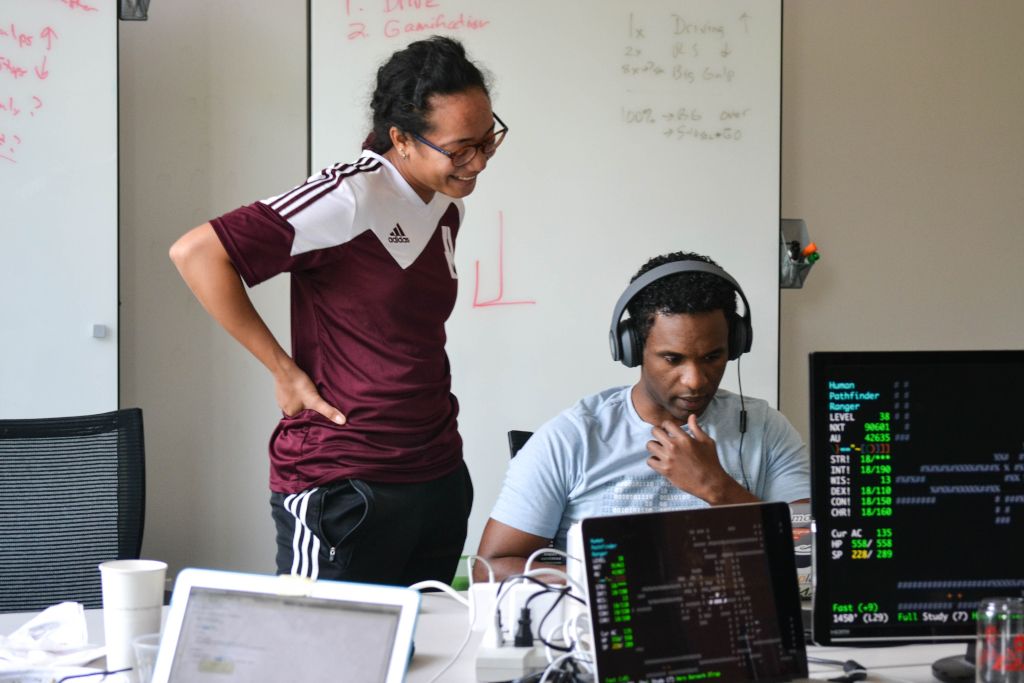
Finding top-notch people (engineers, designers, etc.) to work at SEP is a key thing we focus on each year. As part of finding and attracting great interns, it’s important to have a clear idea of what your company has to offer. Students will interact with lots of companies, often in quick succession. Knowing what you bring to the table (and how it differs from other companies’ approaches) helps solidify impressions. Clear messaging can also get the interest of students who would be good matches.
As part of SEP’s recruiting team, I go to career fairs each year. I also take part in many of the intern interviews we do each year. Over time, it’s become clear that there are a few things we offer that consistently catch the interest of potential interns.
Offer Interesting Work
The projects we have at SEP are really varied. We work across multiple industries, solving complicated problems for our clients. When we tick through options like helping in the agricultural sector, building modeling software to help refine manufacturing and distribution chains, or monitoring engine health information for the aerospace industry, there is always something in there that piques the interest of students. This interest usually boils down to being able to work on complicated problems that make a difference in the world.
We offer our interns the opportunity to work with one of our teams actually building solutions to these varied problems. It can be common for companies to have the “intern project” for the summer. In that model, interns are clustered together, often working on an internal application that may or may not be used when the summer ends.
We don’t think the “intern project” style of internship reflects what working as a professional in a software consultancy really looks like. By having our interns work in our client projects we let them experience what it is likely working on a client engagement. This also gives them the chance to create solutions to the sorts of problems they found interesting when they heard what we work on.
Allow for Self-Selection
For the past several years, we’ve used a process of self-selection with each incoming class of interns. The basic mechanics of this are:
- Finding the projects that will be good fits for intern experiences (a separate topic on its own)
- Having each of those project teams write up a short description of the project (tech stack, team size, industry, domain, etc.)
- Sending the list of projects to the incoming interns
- Asking each intern to pick their top projects and tell us why
From those responses, we will match interns up with projects that seem the best fit.
When I describe this process to students, I highlight they can use this opportunity to get what they want out of their intern experience. For some people, they know a particular technology well and want to keep using it professionally. Others uses this as an opportunity to learn something completely new.
Provide Team Structure and Support
When talking with potential interns, we’re often asked what it is like to work as an intern at SEP. The main theme in our response is that they would work as part of a team building software solutions for our clients. This means a few different things.
The internship starts with a a deliberate on-boarding process to their new team and to SEP. Within the first day and first week, we make sure there is a solid structure in place to provide support for our new interns.
We place each of our interns within an existing team focused on a client project. We know that a summer internship only last a few months. So we want to make sure some project start-up churn is already sorted out before interns join the team. This lets our interns get started in their experience right away.
We use processes like pairing and code reviews (both having their code reviewed and reviewing the code of more experienced members of their teams) to provide continual opportunities for learning and feedback.
As part of selecting projects that would be good fits for interns, we look for those projects that will last the duration of the summer. It’s important for our interns to experience some continuity of their time with us. That extended time on a single project allows our interns to get more grounded in the solution we’re building. It also allows them to become deeply integrated into their teams.
This style of working in a closely knit team and getting to learn from others with more experience in the industry will often appeal to those students we’re talking to.
Using Intern Feedback to Improve the Program
Gathering feedback and improving is ingrained into the culture at SEP. We incorporate that default style of reflection and change into our internship program as well.
At the end of the summer, we ask all our interns about their experience over the summer. We find out what went well and we should keep doing. We ask about the pain points our interns may have experienced. Lastly, we provide our interns an opportunity to tell us their ideas for things we could start doing.
This opportunity to influence the internship program itself provides another dimension to the internship experience. Our past interns found this valuable (and our potential interns find it compelling).
Conclusion
I tell students that one thing we want to make sure is that they walk out of the internship having a good sense for what working at SEP would actually be like. Whether from the types of projects, the ability to influence what they work on, or the learning opportunities our team-based work provides, we’ve found that interns end up with great experiences and send their friends and classmates our way the next year.